I wanted to know why artists and writers are so self-absorbed.
Then I wanted to know why writers, painters, and other artists bloom late.
In popular posts I addressed those questions. Now I want to know why so many writers and artists are intense and have intense personalities.
Waking, Wanting To Get Going
 I was excited waking up at 3:00 A.M. yesterday, and I was not thinking of going back to sleep. I wanted to finish some poems where I had left off the night before. I thought, “Let my wife–a calmer, less excitable person–sleep; I love to work and I have work to do.”
I was excited waking up at 3:00 A.M. yesterday, and I was not thinking of going back to sleep. I wanted to finish some poems where I had left off the night before. I thought, “Let my wife–a calmer, less excitable person–sleep; I love to work and I have work to do.”
Then I started thinking that it was likely that other creative people I know–good friends in the arts–at that very moment also were waking early and were anxious to get to work on their project, that we are similar–we resemble each other in regard to the emotions we bring to bear as we live and work–that we are all creative and we are all intense and excitable. Certain qualities endear creative people to me. One is their intensity.
It seemed to me then that intensity and excitability were a pattern, a hard and fast characteristic of myself and my artful friends, and come to think of it, of many of the famous writers and artists and other creative people I have been reading about, studying, admiring, and writing about all my life. Their intensity made them different.
The Feeling of Intensity
What does intensity feel like?
 Intense writers and artists do everything intensely–experiencing, feeling, thinking, and imagining. They are significantly different human beings from other writers and artists (and agents and family members and co-workers) who are not intense. They feel their emotions strongly. They soar high with elevated emotions, and they plunge into dark moods, at times their moods changing so fast as to be bewildering. In contrast, people who are not intense the way so many writers and artists are feel their emotions more mildly and without such major fluctuations between the high moods and the low moods. Differences in intensity between people who work closely together or live together may cause conflicts.
Intense writers and artists do everything intensely–experiencing, feeling, thinking, and imagining. They are significantly different human beings from other writers and artists (and agents and family members and co-workers) who are not intense. They feel their emotions strongly. They soar high with elevated emotions, and they plunge into dark moods, at times their moods changing so fast as to be bewildering. In contrast, people who are not intense the way so many writers and artists are feel their emotions more mildly and without such major fluctuations between the high moods and the low moods. Differences in intensity between people who work closely together or live together may cause conflicts.
Some writers and artists feel that they are being flooded by waves of joy, that their every cell is being excited. Some writers and artists–perhaps you, certainly I–revise their work tirelessly, at times almost maniacally, ten times, twenty times, thirty times, until they are satisfied the work is the best they can do. Only then can they stop themselves.
The intensity of writers’ and artists’ personality is a powerful element of their creativity. The wonderful poet John Keats thought that intensity–not intelligence or any other quality — in and of itself is the most powerful creative element of all.
Intensity and the Arts
 Intensity is a quality found in many creative people that facilitates artistic pursuits. Abbe Dimnet said that the creator’s intensity will be reflected in the quality of the work: “The experience of most artists is that the quality of their production is in keeping with the intensity of their wish.” Henry James wrote: “It is art that makes life, makes intensity, makes importance.” Horace said, “Painters and poets alike have always had license to dare anything.” It is their intensity that gives them strength. Keats said, “The excellency of every art is its intensity “ A problem every writer and artist faces is maintaining in every phase of their story or painting the intensity that keeps it going and energizes the creator’s every gesture and the work’s every detail. They must be able to generate and sustain intensity as they work.
Intensity is a quality found in many creative people that facilitates artistic pursuits. Abbe Dimnet said that the creator’s intensity will be reflected in the quality of the work: “The experience of most artists is that the quality of their production is in keeping with the intensity of their wish.” Henry James wrote: “It is art that makes life, makes intensity, makes importance.” Horace said, “Painters and poets alike have always had license to dare anything.” It is their intensity that gives them strength. Keats said, “The excellency of every art is its intensity “ A problem every writer and artist faces is maintaining in every phase of their story or painting the intensity that keeps it going and energizes the creator’s every gesture and the work’s every detail. They must be able to generate and sustain intensity as they work.
Emotional Intensity and Over-Excitability of Many People in the Arts
“Emotional intensity” of the kind I am describing is a quality that Polish psychologist, psychiatrist, physician, and poet Kazimierz Dabrowski found when he studied intellectually or artistically gifted people. The degree of a person’s emotional intensity is a stable characteristic. Some people are intense; some are not. Just as self-absorbed artists and writers can’t help being self-absorbed any more than they can help having the color eyes they do, intense artists and writers can’t help being intense.
Dabrowski recognized that, as I thought, creative people experience an intensification of experience much beyond what other people experience. Dabrowski considered the intensity of their emotions, their sensitivity and emotional extremes–their “over-excitabilities”–to be part and parcel of their makeup. Every aspect of their personality is intense.
They are “spirited,” and are also more sensitive, perceptive, energetic, and persistent than other people. They possess what I have called “inner” skills such as persistence, confidence, and courage that not everyone has but that lead directly to success in the arts. Dabrowski identified five “overexcitabilites” exhibited by more people in the artistically gifted population than in the general population.
The Five Dimensions of Intense Writers’ and Artists’ Lives
- Sensual
Sensualists, intense writers and artists seek an enhanced sensory and aesthetic pleasure in seeing, smelling, tasting, touching, hearing, and sex. They delight in beautiful objects and in sounds of words, and in form, color, and balance. Negatively, they may overeat and be sexually over-indulgent.
- Psychomotor
Intense people have a surplus of energy, are competitive, enjoy intense physical activity such as fast games and sports, often are compulsive talkers–they may jabber–and act impulsively. They may have nervous habits. They may bite their nails or have nervous twitches.
- Intellectual
They enjoy intensified activity of their mind in their curiosity, concentration, and in their capacity for sustained intellectual effort, avid reading, asking probing questions, and making keen observations. They can vividly recall what they see with their eyes (that fundamental necessity for writers and artists) and may be detailed planners. They are tenacious problem-solvers. They search for truth and understanding. They think about thinking and love theory and analysis. They are logical and independent thinkers.
- Imaginational
In speaking and writing, intense writers and artists often use images and metaphors, are given to poetic and dramatic perceptions, and are skilled at inventing. Some can make up fantasy worlds of their own and imaginary companions and are attracted to magic and fairy tales. Under emotional tension their imagery can mix truth and fiction. They may have elaborate dreams and illusions. They cannot tolerate boredom. They may lack self-judgment and be overly-critical.
- Emotional
The feelings and emotions of over-excitable writers and artists are intensified. They are given to extremes of emotions, complex feelings and a large range of emotions and have an awareness of the feelings of others. They have heights and depths of emotions that others lack. At times their mood soars. And it also may plunge. Their moods change quickly.
They may have strong physical expressions of over-excitability such as tense stomach, sinking heart, pounding heart, sweaty palms. Intense writers and artists experience euphoria, enthusiasm, and ecstasy, but also shyness, timidity, and obsessiveness.
But Dabrowski found that inner forces were at work in them also, forces that generated overstimulation, conflicts, and pain, and often set them out in a search for a way out. One way out may lead to inner growth and transformation, another may lead to results such as addiction.
Examples of Famous Intense Writers and Artists
 Who could be more intense than poet Walt Whitman who expressed a wish to have “one hour of madness and joy,” “to feed the remainder of life with one hour of fullness and freedom,” “To have the feeling today or any day I am sufficient as I am.” Who more intense than novelists Charles Dickens with his phenomenal storehouse of drive that enabled him to work on a multiplicity of books, speeches, plays, travels, and social projects at the same time without ever tiring?
Who could be more intense than poet Walt Whitman who expressed a wish to have “one hour of madness and joy,” “to feed the remainder of life with one hour of fullness and freedom,” “To have the feeling today or any day I am sufficient as I am.” Who more intense than novelists Charles Dickens with his phenomenal storehouse of drive that enabled him to work on a multiplicity of books, speeches, plays, travels, and social projects at the same time without ever tiring?
Or Thomas Wolfe whose monumental goal was nothing less than to describe in the millions of published words that poured out of him uncontrollably, as from a spigot, every experience he had ever had? And Gustave Flaubert, a pioneer of a modern writing style, who agonized rewriting his novels and stories to perfection? Or intense painter Vincent van Gogh who produced a masterpiece a day, or Claude Monet, who for his artistic experiments could paint thirty or forty canvasses of exactly the same scene.
There are drawbacks to a writer or artist being over-excitable and intense. But the advantages of being a writer or artist who is intense and has the powerful energies, the drive, and many other qualities that facilitate success in the arts far outweigh the negatives. The creative’s intensity is reflected in the quality of the work they produce–more intensity, better quality work.
If writers and artists are asked to identify the important characteristics they would l really like to have that would positively affect their career, they will be wise to identify intensity.
An intense writer or artist trying to create a vision they perhaps alone perceive is fortunate.
© 2023 David J. Rogers
For my interview from the international teleconference with Ben Dean about Fighting to Win, click the following link:
Order Fighting to Win: Samurai Techniques for Your Work and Life eBook by David J. Rogers
or
Order Waging Business Warfare: Lessons From the Military Masters in Achieving Competitive Superiority
or


 Whether you find creative people in remote little mountain kingdoms accessible only by mule or in big, modern, cosmopolitan cities, you will discover that they are surprisingly alike. The many traits they share are not all favorable; some are obstacles. Yet those traits–the worst and the best together–prepare creative people for fascinating lives other people look at with admiration and envy.
Whether you find creative people in remote little mountain kingdoms accessible only by mule or in big, modern, cosmopolitan cities, you will discover that they are surprisingly alike. The many traits they share are not all favorable; some are obstacles. Yet those traits–the worst and the best together–prepare creative people for fascinating lives other people look at with admiration and envy. May be “overlooked” as school children. Their talents unrecognized, they may have undistinguished elementary and high school careers, only to be recognized for their significant achievements later in life to the surprise of everyone.
May be “overlooked” as school children. Their talents unrecognized, they may have undistinguished elementary and high school careers, only to be recognized for their significant achievements later in life to the surprise of everyone. Sadly, at times may be too emotionally ill to work, particularly poets and writers who may be victims of the high and inexplicable incidence of debilitating
Sadly, at times may be too emotionally ill to work, particularly poets and writers who may be victims of the high and inexplicable incidence of debilitating  Have an insatiable need to
Have an insatiable need to  “Know who they are.” Are marked by a clear, unambiguous sense of identity, as “I am an historical novelist specializing in women’s roles in England during the Victorian era.”
“Know who they are.” Are marked by a clear, unambiguous sense of identity, as “I am an historical novelist specializing in women’s roles in England during the Victorian era.” Can be playful, child-like, humorous, silly, fun to be with, and seem younger than their age.
Can be playful, child-like, humorous, silly, fun to be with, and seem younger than their age. Benefit from a rare a
Benefit from a rare a For survival must become skilled at overcoming obstacles, of which there are many in the arts.
For survival must become skilled at overcoming obstacles, of which there are many in the arts. painter. The storm buffeting the windows and pelting them with hail and snow made impossible even the thought of digging cars out and driving home. But everyone was in a good mood, and the house was warm. We were happy being together again after being separated so long by COVID.
painter. The storm buffeting the windows and pelting them with hail and snow made impossible even the thought of digging cars out and driving home. But everyone was in a good mood, and the house was warm. We were happy being together again after being separated so long by COVID. accomplished people in the arts have wondered what they have that makes their creative work possible. The main quality anyone must possess if they are trying to be successful in anything, not just the arts, but certainly the arts, I feel, is energy.
accomplished people in the arts have wondered what they have that makes their creative work possible. The main quality anyone must possess if they are trying to be successful in anything, not just the arts, but certainly the arts, I feel, is energy.  “Painters, writers, actors, and dancers enter the world talented. From the beginning of their lives they can draw better than other children or write more interesting compositions, act out scenes more skillfully, dance more gracefully. Just look at the lovely paintings some little children can paint and the poems they can write. Some children are too young to have learned to paint, yet they paint wonderfully and have technique. No one has taught them. They can paint superbly before being taught. When they are being taught they absorb information so quickly, it’s astonishing. That’s the definition of talent.
“Painters, writers, actors, and dancers enter the world talented. From the beginning of their lives they can draw better than other children or write more interesting compositions, act out scenes more skillfully, dance more gracefully. Just look at the lovely paintings some little children can paint and the poems they can write. Some children are too young to have learned to paint, yet they paint wonderfully and have technique. No one has taught them. They can paint superbly before being taught. When they are being taught they absorb information so quickly, it’s astonishing. That’s the definition of talent. “I think that
“I think that  The storm still didn’t look so good, so they stayed the night. In the morning Paul insisted on making breakfast. I made coffee. We vowed to get together again soon. Then in early afternoon a bright sun came out, the winds died, and they left for home where work and many challenges were waiting.
The storm still didn’t look so good, so they stayed the night. In the morning Paul insisted on making breakfast. I made coffee. We vowed to get together again soon. Then in early afternoon a bright sun came out, the winds died, and they left for home where work and many challenges were waiting. focus on a system to improve your creative performance is to be aware of what you are trying to accomplish–with your life, and in this year, this day, this moment. When you acquire the habit of saying to yourself often in your daily life–morning, noon, and night–“Focus on your purpose,” those words become a hypnotic motto that stirs your muscles and mind to action. Then your life takes on a quality that is now becoming rare even among gifted creators–vital intensity that facilitates the production of works that can be pointed to and admired. That single goal–producing works as a result of talent combined with discipline–is more powerful than all other creative goals.
focus on a system to improve your creative performance is to be aware of what you are trying to accomplish–with your life, and in this year, this day, this moment. When you acquire the habit of saying to yourself often in your daily life–morning, noon, and night–“Focus on your purpose,” those words become a hypnotic motto that stirs your muscles and mind to action. Then your life takes on a quality that is now becoming rare even among gifted creators–vital intensity that facilitates the production of works that can be pointed to and admired. That single goal–producing works as a result of talent combined with discipline–is more powerful than all other creative goals. that specialty. And you must
that specialty. And you must 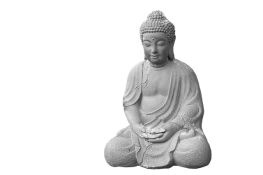 free of suffering are the goal in Buddhism. The Buddhist Eightfold Path consists of eight ideals that when practiced bring an upright and happy life. They are eight prescriptive “rights,” including right association–being careful about associating with good, wholesome, even holy people; right intent–making up your mind as to the one main purpose in life you really want to pursue; right speech–no lying, backbiting, or slander; right thoughts–thinking compassionately, generously, and with goodwill; right conduct–not killing, stealing, or lying; right effort–using your will power and taking action to achieve a good life; right concentration–the use of techniques to enhance concentration and enlightenment. And there is right livelihood–doing what you’re best suited to do in an honest occupation that harms no one.
free of suffering are the goal in Buddhism. The Buddhist Eightfold Path consists of eight ideals that when practiced bring an upright and happy life. They are eight prescriptive “rights,” including right association–being careful about associating with good, wholesome, even holy people; right intent–making up your mind as to the one main purpose in life you really want to pursue; right speech–no lying, backbiting, or slander; right thoughts–thinking compassionately, generously, and with goodwill; right conduct–not killing, stealing, or lying; right effort–using your will power and taking action to achieve a good life; right concentration–the use of techniques to enhance concentration and enlightenment. And there is right livelihood–doing what you’re best suited to do in an honest occupation that harms no one.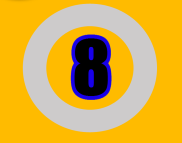 Success in a creative field (in fact success in any field) is not attributable to one thing alone such as talent or IQ as many people believe, or three or four things. I believe there are eight components. It’s important to understand what the eight components are and the questions they will answer:
Success in a creative field (in fact success in any field) is not attributable to one thing alone such as talent or IQ as many people believe, or three or four things. I believe there are eight components. It’s important to understand what the eight components are and the questions they will answer: their creative lives by means of the work they do. If they are unable to work or the work is poor quality or is stopped-up and doesn’t go well, they suffer. Regarding the necessity of a creator to
their creative lives by means of the work they do. If they are unable to work or the work is poor quality or is stopped-up and doesn’t go well, they suffer. Regarding the necessity of a creator to  There isn’t one universal work/production program that suits all creators. A production program won’t work if it’s imposed. Each creator’s program will have to be idiosyncratic–custom-designed by yourself for yourself. To find the ways and means to improve the quantity and quality of your production, you should experiment and try out different approaches until the best work/production program suited to yourself is found.
There isn’t one universal work/production program that suits all creators. A production program won’t work if it’s imposed. Each creator’s program will have to be idiosyncratic–custom-designed by yourself for yourself. To find the ways and means to improve the quantity and quality of your production, you should experiment and try out different approaches until the best work/production program suited to yourself is found. For high quality uninterrupted work to happen, not all, but most creators need isolation and solitude. “The concentration of writing requires silence. For me, large blocks of silence. It’s like hearing a faint Morse code…a faint signal is being given and I need quiet to pick it up” (Philip Roth). Some creators prefer noisy environments. But even the feeling that you might be interrupted interferes with creative thought.
For high quality uninterrupted work to happen, not all, but most creators need isolation and solitude. “The concentration of writing requires silence. For me, large blocks of silence. It’s like hearing a faint Morse code…a faint signal is being given and I need quiet to pick it up” (Philip Roth). Some creators prefer noisy environments. But even the feeling that you might be interrupted interferes with creative thought. production goals continuously in mind. Production ebbs and flows. Some days work comes out of you in torrents. You’re in overdrive. But other days–nothing. But one way or another,
production goals continuously in mind. Production ebbs and flows. Some days work comes out of you in torrents. You’re in overdrive. But other days–nothing. But one way or another,  A curious thing would happen. The quantity group would also produce the highest quality work. The quantity group would churn out streams of work and learn from their many mistakes and develop wide assortment of skills. But the quality group would get caught up the elusive concept of perfection and grandiose dreams and would become paralyzed. Some creators produce 10, 15, or 25 times more works than other creators. Those who produce the most works usually rise higher, do better work, and find a greater sense of accomplishment.
A curious thing would happen. The quantity group would also produce the highest quality work. The quantity group would churn out streams of work and learn from their many mistakes and develop wide assortment of skills. But the quality group would get caught up the elusive concept of perfection and grandiose dreams and would become paralyzed. Some creators produce 10, 15, or 25 times more works than other creators. Those who produce the most works usually rise higher, do better work, and find a greater sense of accomplishment.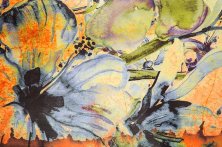 If you neglect an activity for just two days you’ll function much less effectively when you resume work. In writing and painting, as in everything else, inactivity leads to the atrophy of abilities. Your level of motivation affects your willingness to work. The quantity of your production is in direct proportion to the intensity of your
If you neglect an activity for just two days you’ll function much less effectively when you resume work. In writing and painting, as in everything else, inactivity leads to the atrophy of abilities. Your level of motivation affects your willingness to work. The quantity of your production is in direct proportion to the intensity of your 
 had, but doesn’t. It is a highly-regarded journal and would enhance any serious writer’s reputation to appear in it. That journal had published other pieces of Kathy’s in the past during her particularly prolific period when work poured out of her and was in demand by editors and readers. Some of her books were being published at the time, and many of her articles appearing in magazines were achieving record readership scores.
had, but doesn’t. It is a highly-regarded journal and would enhance any serious writer’s reputation to appear in it. That journal had published other pieces of Kathy’s in the past during her particularly prolific period when work poured out of her and was in demand by editors and readers. Some of her books were being published at the time, and many of her articles appearing in magazines were achieving record readership scores. I am talking about the difference between writers whose overriding goal is to see their work in print–a Publication Focus–contrasted with writers whose overriding goal stops short of publication in which they are not interested. They are concerned solely with generating what is in their judgment the highest possible quality text–a Production Focus. The latter are more than contented to produce works they are proud of without seeing them published.
I am talking about the difference between writers whose overriding goal is to see their work in print–a Publication Focus–contrasted with writers whose overriding goal stops short of publication in which they are not interested. They are concerned solely with generating what is in their judgment the highest possible quality text–a Production Focus. The latter are more than contented to produce works they are proud of without seeing them published. matters to them is that the works they produce be the best they have the skills to produce. They believe that because they are not interested in publishing but in producing the highest quality work they can, they are more creative and do better work than they would were they competing with others to see their work in print, and there are grounds for that belief.
matters to them is that the works they produce be the best they have the skills to produce. They believe that because they are not interested in publishing but in producing the highest quality work they can, they are more creative and do better work than they would were they competing with others to see their work in print, and there are grounds for that belief. produced was then graded by professionals–seasoned painters grading the paintings, experienced writers the writing, etc. The results were significant in that no matter what the reward was or when it was given, if the subjects thought they were working for external rewards, even a little trinket, and not for fun and pleasure, they became less creative. But when they were light-hearted and fooling around and no external reward was involved, they were more creative and their work was better.
produced was then graded by professionals–seasoned painters grading the paintings, experienced writers the writing, etc. The results were significant in that no matter what the reward was or when it was given, if the subjects thought they were working for external rewards, even a little trinket, and not for fun and pleasure, they became less creative. But when they were light-hearted and fooling around and no external reward was involved, they were more creative and their work was better. a clear, informative, and entertaining way concepts that were unfamiliar to western thinking. It was a challenge because the concept of the book was totally new and original. Every day’s work of many hours was fulfilling, I didn’t spend a second thinking about how my book would do in the stores, only about the book’s clarity and how useful I could make it and how inviting it would be for readers. It was a highly successful and profitable book and my ambitions for the next book I began were high. But I found my thoughts losing focus. They often wandered away from the book’s content and style and how to satisfy the reader to where I would build the new house the new book’s royalties would bring me and the kind of cars I would buy. Both books received many accolades and made best seller lists. But whereas I wouldn’t change a single word of the first book, I live with the knowledge that the second book could have been better.
a clear, informative, and entertaining way concepts that were unfamiliar to western thinking. It was a challenge because the concept of the book was totally new and original. Every day’s work of many hours was fulfilling, I didn’t spend a second thinking about how my book would do in the stores, only about the book’s clarity and how useful I could make it and how inviting it would be for readers. It was a highly successful and profitable book and my ambitions for the next book I began were high. But I found my thoughts losing focus. They often wandered away from the book’s content and style and how to satisfy the reader to where I would build the new house the new book’s royalties would bring me and the kind of cars I would buy. Both books received many accolades and made best seller lists. But whereas I wouldn’t change a single word of the first book, I live with the knowledge that the second book could have been better. “One day I seemed to shut a door between me and all publishers. I said to myself, ‘Now I can write.” He started working on The Sound and the Fury, “thinking of books, publication, only in the sense in saying to myself, I wont (sic) have to worry about publishers liking or not liking this at all.”
“One day I seemed to shut a door between me and all publishers. I said to myself, ‘Now I can write.” He started working on The Sound and the Fury, “thinking of books, publication, only in the sense in saying to myself, I wont (sic) have to worry about publishers liking or not liking this at all.” writing every day. Most of them quit because of the heavy, depressing weight of too many failures and too few–if any–successes and the toll of failures on one’s
writing every day. Most of them quit because of the heavy, depressing weight of too many failures and too few–if any–successes and the toll of failures on one’s  bored. Just as children do that, writers can do something remarkable. As fully absorbed as children, they can work on perfecting a single paragraph forty or fifty times without experiencing a moment of boredom while people who are not writers and think that one draft is sufficient are astonished that such a feat is possible. The conclusion of Amabile’s experiments was that a playful approach like that of children increases the likelihood of producing creative results, and that pursuing external rewards diminishes the person’s creativity.
bored. Just as children do that, writers can do something remarkable. As fully absorbed as children, they can work on perfecting a single paragraph forty or fifty times without experiencing a moment of boredom while people who are not writers and think that one draft is sufficient are astonished that such a feat is possible. The conclusion of Amabile’s experiments was that a playful approach like that of children increases the likelihood of producing creative results, and that pursuing external rewards diminishes the person’s creativity. themselves) which Production Writers experience has been shown to improve the quality of the work that is produced. That is why so many famous writers think that they, and no one else, are the best judge of their work and why so many of them ignore or don’t ask for the advice of editors. Who enjoys being evaluated? Writers often dread evaluations, and evaluations negatively affect the writer’s mood and thus the quality of work that is produced. A Production Writer may ask for editorial assistance–to be helped–but not to be evaluated.
themselves) which Production Writers experience has been shown to improve the quality of the work that is produced. That is why so many famous writers think that they, and no one else, are the best judge of their work and why so many of them ignore or don’t ask for the advice of editors. Who enjoys being evaluated? Writers often dread evaluations, and evaluations negatively affect the writer’s mood and thus the quality of work that is produced. A Production Writer may ask for editorial assistance–to be helped–but not to be evaluated. fix. I was writing what should be an easy section on planning what you are about to write or paint. Now planning is something I know a lot about. For years I was a trainer for a consulting company I founded. I trained thousands of people to use the best techniques of planning so they might effectively plan whatever business or career project they had in mind.
fix. I was writing what should be an easy section on planning what you are about to write or paint. Now planning is something I know a lot about. For years I was a trainer for a consulting company I founded. I trained thousands of people to use the best techniques of planning so they might effectively plan whatever business or career project they had in mind. Even as children girls and boys who will become writers and painters when they grow up have been told and taught by teachers to plan the work before they begin to execute it. They are taught that in grade school, and in graduate school professors or experienced visiting artists and writers stipulate that every work should have a plan. Planning becomes a habit that isn’t questioned because “everyone knows you have to have a plan before you begin. How else will you know how to proceed?”
Even as children girls and boys who will become writers and painters when they grow up have been told and taught by teachers to plan the work before they begin to execute it. They are taught that in grade school, and in graduate school professors or experienced visiting artists and writers stipulate that every work should have a plan. Planning becomes a habit that isn’t questioned because “everyone knows you have to have a plan before you begin. How else will you know how to proceed?” Some creatives meticulously plan and think the work to be produced through to the last detail. But some non-planner creatives begin to paint or write without a subject in mind, preferring to permit the work to grow organically and emerge. Some writers, like me, begin without any conscious concept of how to proceed other than, at best, a notion not at all well-developed of what the work should probably be about.
Some creatives meticulously plan and think the work to be produced through to the last detail. But some non-planner creatives begin to paint or write without a subject in mind, preferring to permit the work to grow organically and emerge. Some writers, like me, begin without any conscious concept of how to proceed other than, at best, a notion not at all well-developed of what the work should probably be about. Non-planning Virginia Woolf said that her idea for Mrs. Dalloway started without any conscious direction. She thought of making a plan but soon abandoned the idea. She said, “The Book grew day by day, by week, without any plan at all, except that which was dictated each morning in the act of writing.” Had someone asked her what exactly she was trying to accomplish other than to follow a woman throughout a day she would have replied, “I’m not sure.” The planner- writers are sure of where they are going. Their plan tells them.
Non-planning Virginia Woolf said that her idea for Mrs. Dalloway started without any conscious direction. She thought of making a plan but soon abandoned the idea. She said, “The Book grew day by day, by week, without any plan at all, except that which was dictated each morning in the act of writing.” Had someone asked her what exactly she was trying to accomplish other than to follow a woman throughout a day she would have replied, “I’m not sure.” The planner- writers are sure of where they are going. Their plan tells them. The more spontaneous process which non-planning creatives like greats Woolf and Mark Twain (possibly America’s greatest writer) and Michelangelo and Leonardo da Vinci use to complete a work is contrary to the rational goal-setting, plan-making processes. Following a plan inhibits certain creatives for whom a more spontaneous approach results in better work.
The more spontaneous process which non-planning creatives like greats Woolf and Mark Twain (possibly America’s greatest writer) and Michelangelo and Leonardo da Vinci use to complete a work is contrary to the rational goal-setting, plan-making processes. Following a plan inhibits certain creatives for whom a more spontaneous approach results in better work. Galenson describes two significantly different types of artists. The “everything must be planned” artists are called Conceptualizers: they must have a full-blown concept of the work they wish to create in all its detail before they begin writing or painting the work. Ernest Hemingway, William Faulkner, James Joyce, Herman Melville, and F. Scott Fitzgerald were Conceptual writers. Pablo Picasso was a Conceptual painter. Conceptualizers state their carefully- wrought goals for a particular work precisely
Galenson describes two significantly different types of artists. The “everything must be planned” artists are called Conceptualizers: they must have a full-blown concept of the work they wish to create in all its detail before they begin writing or painting the work. Ernest Hemingway, William Faulkner, James Joyce, Herman Melville, and F. Scott Fitzgerald were Conceptual writers. Pablo Picasso was a Conceptual painter. Conceptualizers state their carefully- wrought goals for a particular work precisely  Once Conceptualizers find the crucial problem they advance slowly with a plan, but Experimentalists move fast without a plan. Experimentalist’s goals are imprecise. They have ideas about what the work will be like when it is finished, but are unclear about everything else until the piece is written, the painting mounted on a wall. That imprecision is how Experimentalists like to work, but it creates problems. Not clear as to what they want the final work to look like, they have trouble finishing works.
Once Conceptualizers find the crucial problem they advance slowly with a plan, but Experimentalists move fast without a plan. Experimentalist’s goals are imprecise. They have ideas about what the work will be like when it is finished, but are unclear about everything else until the piece is written, the painting mounted on a wall. That imprecision is how Experimentalists like to work, but it creates problems. Not clear as to what they want the final work to look like, they have trouble finishing works. Conceptualizers tend to bloom early, often with a striking new style or innovation or great success at the start of their career. They mature quickly, starting very early, not gradually through years of trial and error as Experimentalist painters like Jackson Pollock and Claude Monet did, but rapidly. A young Ernest
Conceptualizers tend to bloom early, often with a striking new style or innovation or great success at the start of their career. They mature quickly, starting very early, not gradually through years of trial and error as Experimentalist painters like Jackson Pollock and Claude Monet did, but rapidly. A young Ernest  Have a need for self-expression and self-disclosure. Good writers reveal themselves in their work. Readers want writers to reveal themselves. A novel, for example, enables authors to convey a wealth of information that expresses them. Your writing, even the way you turn a phrase and the metaphors you use (why did you use an image of a fish then instead of a train?) and your vocabulary and points of view, tell the reader what you’re like. Writers have a need to discover exactly what they are thinking by writing it out, and then to artfully communicate it to the reader who wants to know.
Have a need for self-expression and self-disclosure. Good writers reveal themselves in their work. Readers want writers to reveal themselves. A novel, for example, enables authors to convey a wealth of information that expresses them. Your writing, even the way you turn a phrase and the metaphors you use (why did you use an image of a fish then instead of a train?) and your vocabulary and points of view, tell the reader what you’re like. Writers have a need to discover exactly what they are thinking by writing it out, and then to artfully communicate it to the reader who wants to know. Possess
Possess  Have a strong concern for your
Have a strong concern for your  Be able to muster an abundance of physical strength and stamina. Often it’s the end of writers’ endurance that stops their working day. Novelist Thomas Wolfe would turn in manuscripts a million words long . He claimed that the physical demands on the writer made the writer’s life seem to him to be the hardest life man has ever known.
Be able to muster an abundance of physical strength and stamina. Often it’s the end of writers’ endurance that stops their working day. Novelist Thomas Wolfe would turn in manuscripts a million words long . He claimed that the physical demands on the writer made the writer’s life seem to him to be the hardest life man has ever known. Have or develop a business sense. You have a career to manage and responsibilities and expenses. Study marketing and salesmanship–read. Take business classes.
Have or develop a business sense. You have a career to manage and responsibilities and expenses. Study marketing and salesmanship–read. Take business classes.

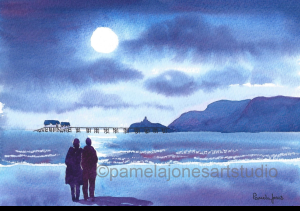




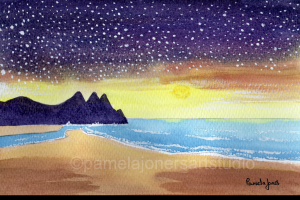
 finishing, you’ve developed a bad habit and you’d better do something about it.
finishing, you’ve developed a bad habit and you’d better do something about it.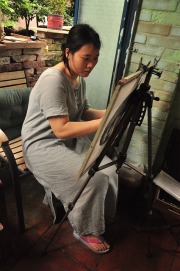 start another contrary, more fruitful habit. To break the habit of consistently not writing, you develop the habit of writing regularly. To combat the habit of quitting too soon, you make yourself not quit.
start another contrary, more fruitful habit. To break the habit of consistently not writing, you develop the habit of writing regularly. To combat the habit of quitting too soon, you make yourself not quit. You’re not a child or hedonist, a worshipper of permissiveness and pleasure who doesn’t have any will power. There are many writers who write not the traditional four or fewer hours daily, but put in eight hours a day, much longer than the majority, considering themselves no different than their parents who worked eight hours a day and the majority of the work force who work eight hours daily.
You’re not a child or hedonist, a worshipper of permissiveness and pleasure who doesn’t have any will power. There are many writers who write not the traditional four or fewer hours daily, but put in eight hours a day, much longer than the majority, considering themselves no different than their parents who worked eight hours a day and the majority of the work force who work eight hours daily.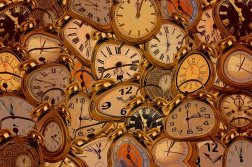 It takes longer to completely absorb yourself in an ambitious project than in an easier, less complicated one. And during that period, distractions seem to come up out of the ground. Any intrusion on the delicate world of a creative mind can make that world disappear. Every intrusion not only robs you of time, but also of the time it takes you to recover. If you set a goal of working a three-hour session and have three interruptions you may be busy for three hours but only do fifteen minutes of actual work. If you try to do four things simultaneously, you’ll probably only finish one, at most two.
It takes longer to completely absorb yourself in an ambitious project than in an easier, less complicated one. And during that period, distractions seem to come up out of the ground. Any intrusion on the delicate world of a creative mind can make that world disappear. Every intrusion not only robs you of time, but also of the time it takes you to recover. If you set a goal of working a three-hour session and have three interruptions you may be busy for three hours but only do fifteen minutes of actual work. If you try to do four things simultaneously, you’ll probably only finish one, at most two. Don’t let a
Don’t let a 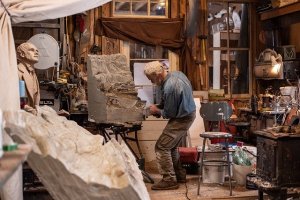 work that leads to the fulfillment of your gifts over the avoidance of work.
work that leads to the fulfillment of your gifts over the avoidance of work.






